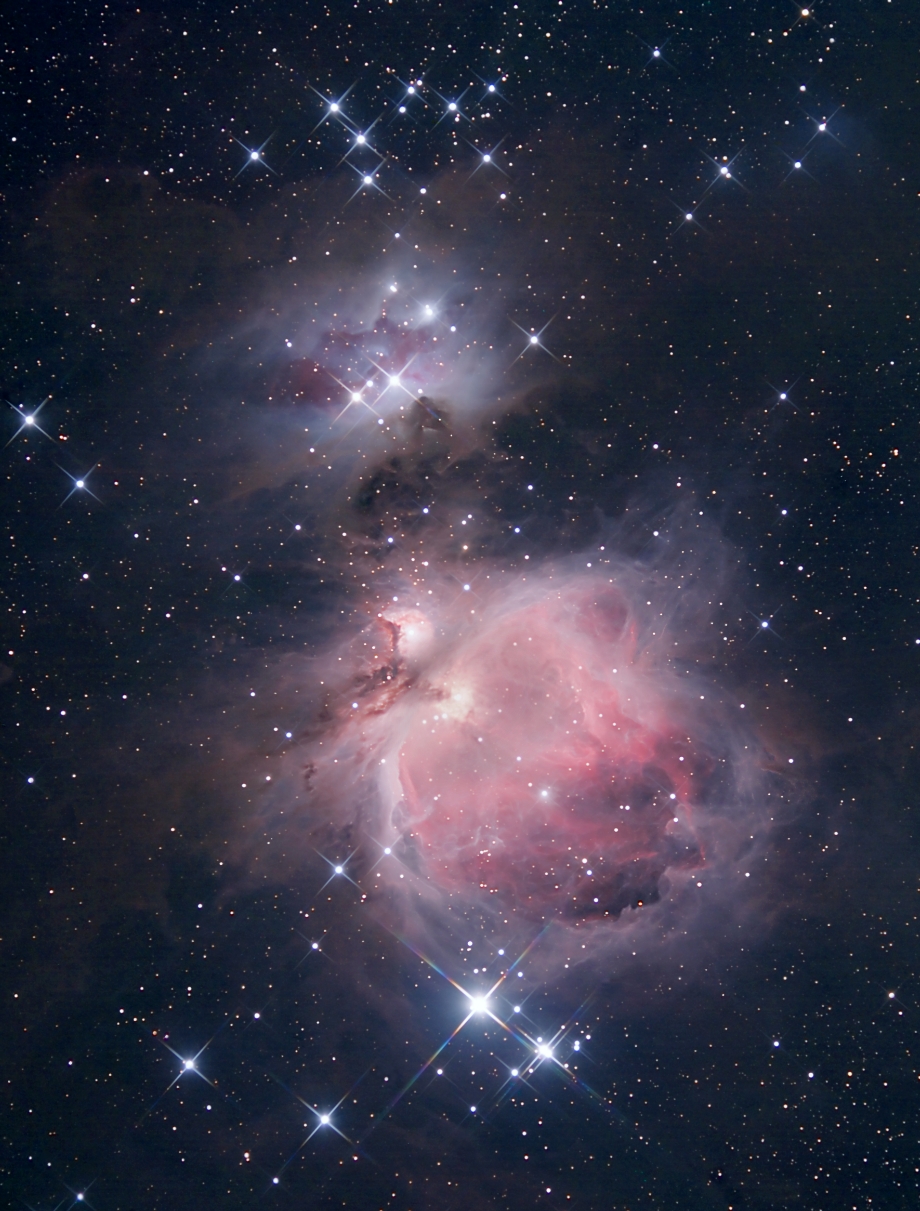 |
Orion's Sword
 |
Copyright 2006 Hap Griffin
This is the "Sword" region easily seen by naked eye below the "Belt" of Orion. Visually, the center "star" of this region is seen as being a bit fuzzy. Binoculars begin to hint at its true cloudy nature, but a telescope reveals it to be the tumultuous cocoon of active star birth that it is...the Great Nebula in Orion. Known as M42 (M43 is the round bright knot just above it), this stunning object is 1500 light-years distant and about 30 light years across.
To the north of
M42 is the blue reflection nebula NGC 1977. This object is also informally
known as the "Running Man" Nebula because of the shape of the dark
region in its center. Click here for a
close-up of this object. If you have your monitor adjusted using the gray
scale chart here, you should be able to see the
large amount of dark brown dust in the area.
The flares on the brighter stars were caused by a pair of thin wires that were
attached across the front of the refractor. Normally, only telescopes with
internal secondary mirrors supported by thin metal vanes (such as Newtonian
scopes) exhibit this diffraction pattern. However, a friend asked me for a
photograph of this region with the diffraction spikes, and since I've always
wanted to experiment with the effect I decided to take an evening and create a
more artistic rather than realistic rendition of this fascinating
region.
Date/Location:
December 27, 2005 Griffin/Hunter
Observatory Bethune, SC
Instrument: Canon 350D Digital SLR (modified) through Orion
ED80 w/ Meade .63 Focal Reducer piggybacked on RCX-400 (cross wires added for
star effect)
Focal Ratio: Approximately f4.7
Guiding: Auto via SBIG ST237 through 10" Meade RCX-400
Conditions: Visually clear - thin clouds cut exposure session
short
Weather: 40 to 32 F
Exposure: 151 minutes total (29 x 5 minutes @ ISO 800, 5 x 1 minute @ ISO 800, 5
x 10 seconds @ ISO 800)
Filters: Baader UV/IR block
Processing: Focused and captured with DSLRFocus.
RAW to TIFF conversion, auto-dark and flat frame calibration, Digital Development,
Richardson-Lucy deconvolution, resizing and JPEG conversion in ImagesPlus. Color correction in Photoshop
6. Noise reduction in Neat Image.